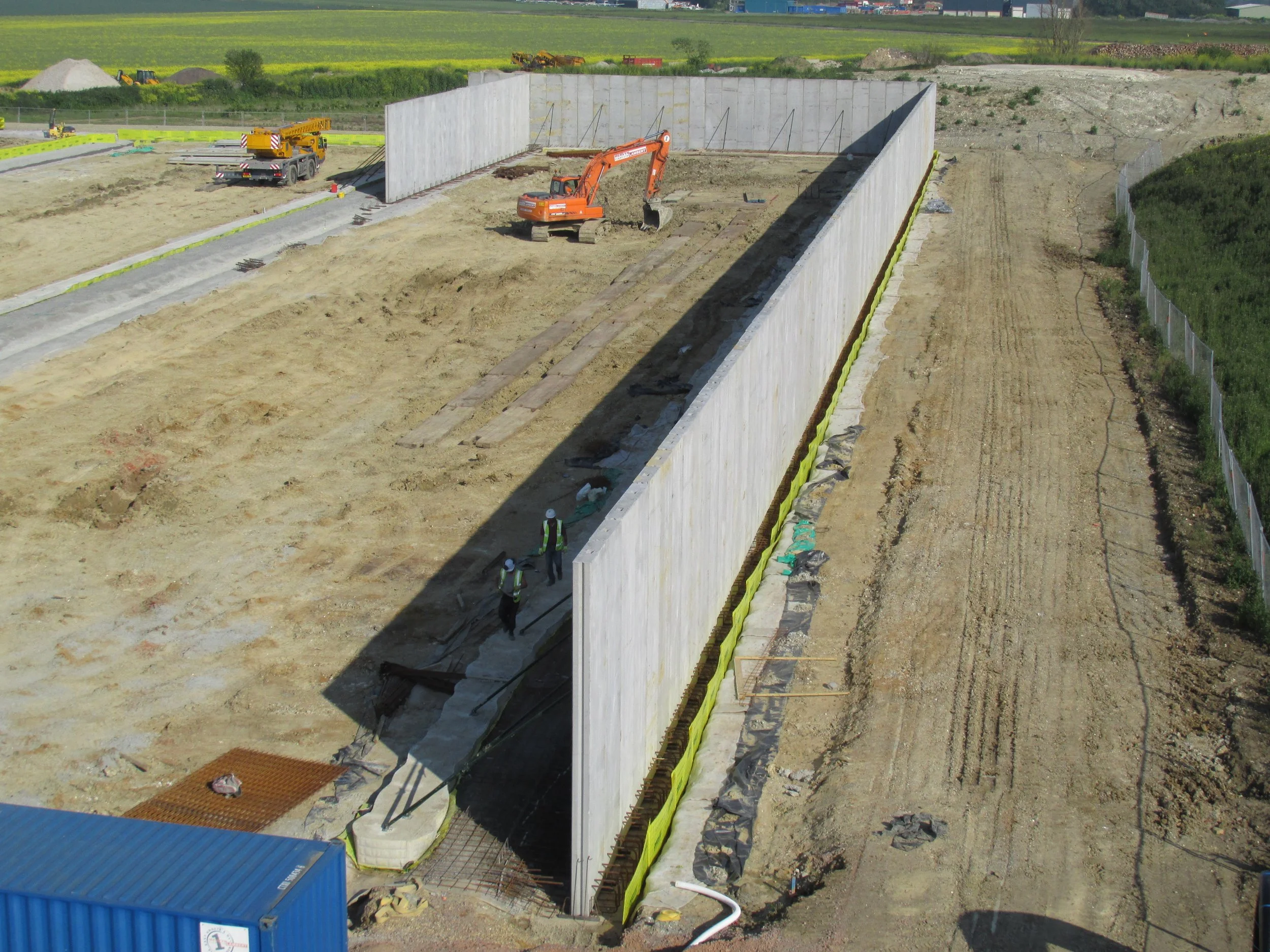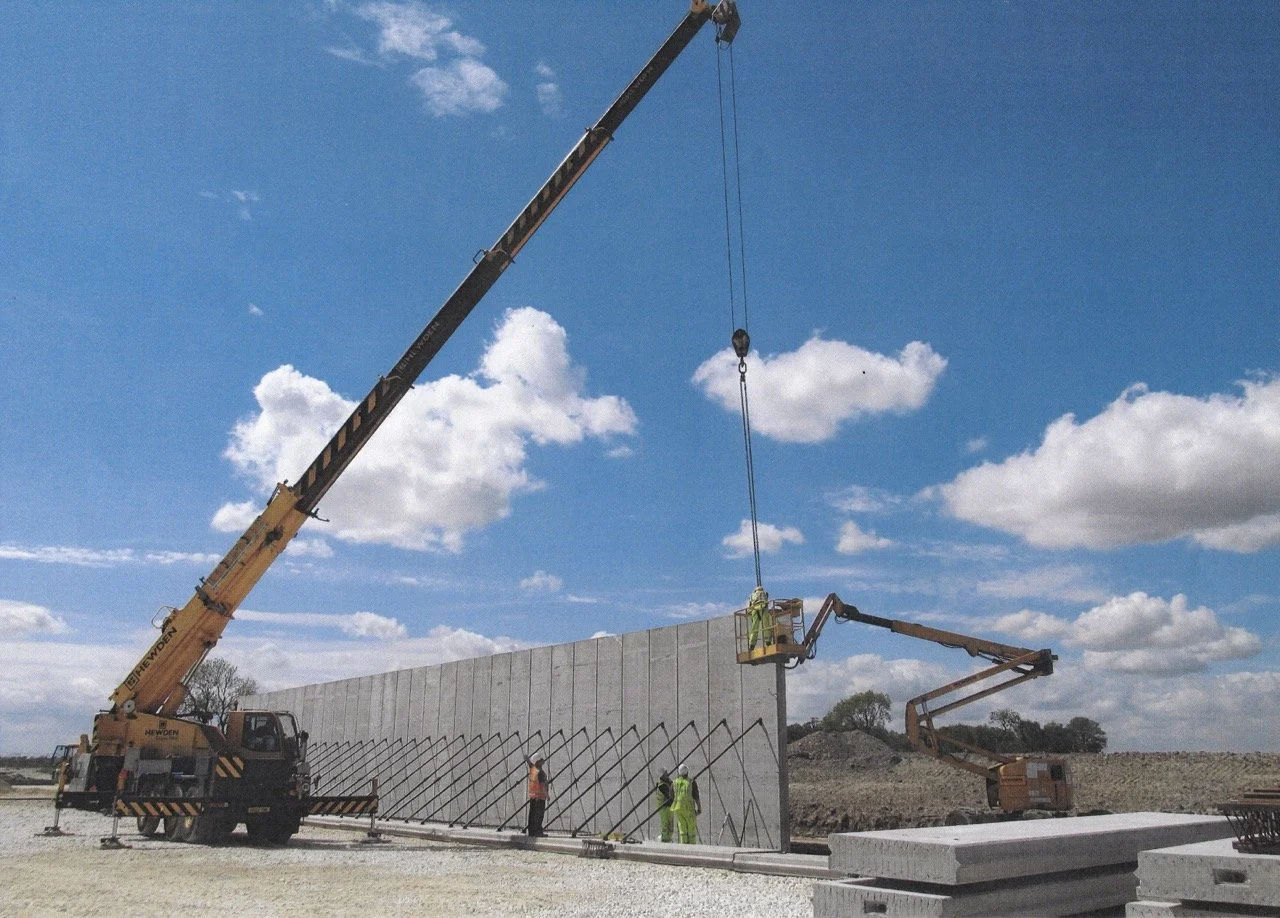Can you build your own silage clamps?
So you have decided where to build your new silage clamp, and you’ve decided what size and shape it needs to be and what type of walls and floor it’s having, now you need to decide who is going to build it. Back in the good old (bad old?) days, this was the sort of work most farmers would do themselves but today it’s more likely that a contractor will do at least some of the work. Is it a good idea to use a specialist builder to construct your new silage clamp and how do you decide who to trust?
AD silage clamp under construction by Landtek
DIY or use a builder?
Time is the most common reason/excuse for getting someone else to do a job for you; “we just don’t have time or the spare hands to do the job”. And that’s a very reasonable deciding factor. In an efficiently run business it’s unreasonable to expect there is sufficient “free” labour to undertake a major construction project without other aspects of the business suffering. Building a silage clamp between milking, scraping out, bedding up and feeding round is going to take considerably longer than it would if that was the only job on the to-do list. So does that make a clamp built by a specialist a better clamp?
Is a silage clamp better if its built by a contractor?
Better in what way? Better because it was built by someone who had lots of experience and knowledge of the rules and regulations, then probably. Better built because a builder knows what materials to use where, yeah possibly. Better because a builder takes more care, errr unlikely. Better because it’s cheaper, almost certainly not. So a contractor built clamp might not always be cheaper, but it should be better value. Now I know that doesn’t make sense to everyone but there is a difference between the price and the value and, however you are building a clamp, it’s going to cost a lots of money. If you don’t spend enough then you put all of the money at risk because the clamp won’t last at best or might collapse at worst. So you need good value, not a good price.
Why you might not want to build a DIY silage clamp
The rules and regulations around the construction of a new silage clamp are enough to put lots of people off doing it themselves. But they shouldn’t really because with the right help and advice - perhaps from a suitable independent consultant…., it’s not that difficult to build a compliant structure. Make sure you get a clear specification of what you need before you start and use this to get “like for like” quotations from builders to compare with your own building costs.
So the special rules for silage clamps - The SSAFO regulations - might not be so scary but unfortunately that’s not the end of it. Your new silage clamp will also fall under the CDM regulations. These rules are designed to make all new buildings safer to build, use and demolish and in general are a good thing. They are not too difficult to follow and are mostly common sense, but they become very very important once something goes wrong. If there is an accident on site, particularly if it’s a serious accident, then the CDM file can be either your best defence or the smoking gun in your hand depending on how you have set things up.
CDM and building a silage clamp
Under the CDM rules, there must be a Principal Contractor and a Principal Designer - they can be the same person. Unfortunately you can’t just say “oh we are not appointing those roles” or “it’s only a small job we won’t need them”. Under the law someone HAS TO take these roles and if you don’t specifically appoint them, then the law assumes it is you the client that has taken on those roles and responsibilities. And when something goes wrong, ultimately it’s either the Principal Designer or/and the Principal Contractor who is responsible - and if that’s you, then you are the one who is in the dock facing the judge. So if you can, make sure you give these roles away in writing to the builder/designer even if you are doing some of the work yourself.
How to choose a builder for your silage clamp
So you might have decided that a builder is the best way to get the new clamp you need, but how do you decide who to trust? Well it doesn’t all come down to price, or it shouldn’t, but how can you be sure you are getting value? The answer is to be very specific about what you want them to quote for. So give them a specification, either draw one up yourself or get your friendly local silage consultant to do it for you. A proper specification might cost you a couple of hundred pounds but it will save you tens of thousands in the long run. Make sure that the builder quotes the specification exactly as you require. This makes it easier to compare quotes and make a value judgment. But the price is only one element to consider, what about the type of work they are going to do?
Well you can’t take a new building project for a test drive or have a clamp on demo but you can go and have a look at someone else’s completed work. This is probably the next best thing. If you can, try and get to speak to the customer without the builder present so you can get a full honest appraisal. And don’t get sweet talked into a contract without some time to make a careful decision.
Keeping a check on the work
Once you’ve chosen and employed a builder, make sure they are delivering the correct spec. The difference in price between cheap ready mix and the right ready mix is enough to tempt a dodgy builder into cutting corners - so keep checking and make sure you get the concrete delivery slips as proof. Oh and while we’re on the subject of concrete, get the cube test results too.
Concrete cube testing moulds can be hired
Whilst it’s good to keep checking and collecting the evidence of what they are doing, make sure you don’t impede the process. If a builder is doing a proper job, there should be procedure to discuss and review the works, you shouldn’t be walking onto the site area whenever you feel like it because it is dangerous. Ask plenty of questions, and do a quick Google on the answers if you’re not sure about them just to see if they are making sense.
Ultimately you have to trust the professionals to do their job; but if your doubts and questions are not fully answered, then don’t hesitate to call a time out and get and independent review of what’s going on. It’s a big call but once the concrete has gone down you’re really stuck with the results. And the same applies even if you are doing the work yourself; if you’re unsure that you are doing the right thing, stop and do some research or get some help. It’s too late to change things once you have poured the concrete and it’s very, very expensive to correct things that were wrong once they are buried in ready mix.
If you want to discuss who should build your next silage clamp or any other topics covered in this series, then please contact me at jeremy@silageconsultant.co.uk



